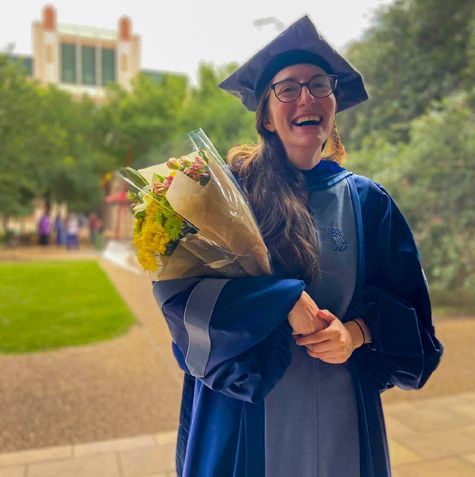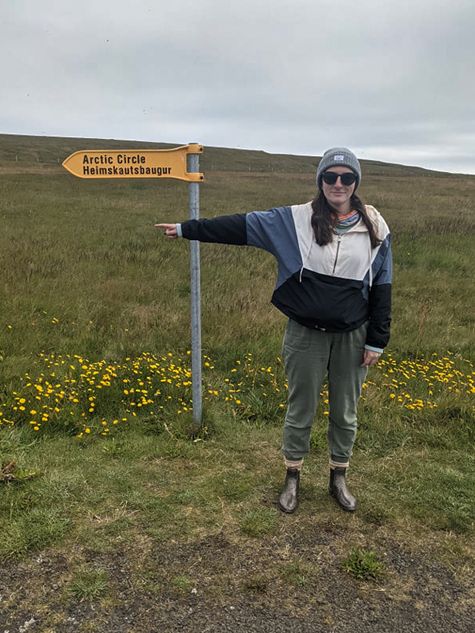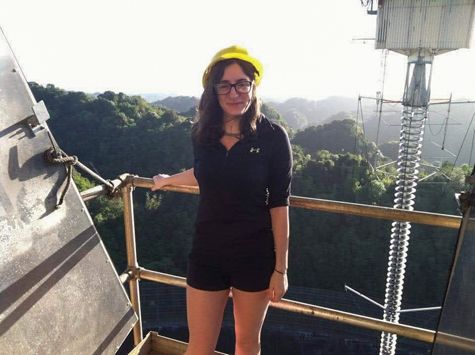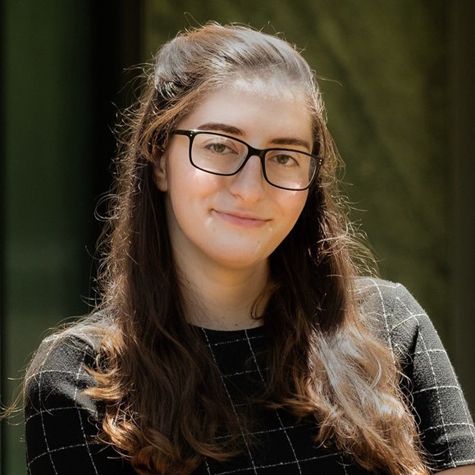Early Career Scientist Spotlight
Dr. Alison Farrish (she/her)
Heliophysicist
Space Weather Laboratory (674)
What science questions do you investigate?
My research focuses on the application of solar and heliophysics modeling tools to questions of the habitability of exoplanet systems. This interdisciplinary work seeks to understand how variations in the Sun’s magnetic activity over short-term and geologic timescales have impacted the environments of Earth and the other rocky Solar System planets. Additionally, I am interested in studying how the Sun may be similar or different to other exoplanet host stars. We investigate these questions using empirical models of magnetic flux emergence and transport on the stellar surface, coupled with stellar wind and coronal emission models. These tools allow us to look at the space weather environments that exoplanet host stars produce that influence planetary processes such as atmospheric escape.
How did you end up working at NASA Goddard?
I started at NASA Goddard at the end of 2021 under the NASA Postdoctoral Program, working with Dr. Katherine Garcia-Sage as an advisor. Dr. Garcia-Sage is a fellow Rice University alum who shares an interest in the intersection of exoplanet science and solar system physics. When I learned of this NPP opportunity to work on constraining the stellar activity that drive exoplanet atmospheric escape processes, I was immediately interested. I feel very fortunate that my research interests aligned so well with Dr. Garcia-Sage’s and that we had a connection through our colleagues at Rice so we could easily get in touch and collaborate on the NPP proposal.

Credit: Alix Macklin
What aspect of your work excites you the most?
I enjoy the interdisciplinary nature of my research, although it sometimes has its challenges. I feel like I am still learning ways to present my work to different audiences in the exoplanet science and heliophysics communities, and that variety in communication styles has kept the work interesting and challenging.
What is an interesting problem or hurdle that you’ve overcome in your work?
Finishing grad school in May of 2021 and searching for postdoc positions throughout the COVID-19 pandemic was definitely a difficult transition. While there were fewer conferences and in-person networking opportunities available throughout the last year of my Ph.D., it was interesting to see how fellow researchers in the field adapted to the new circumstances. I found that a lot of potential postdoc advisors were very accommodating and happy to jump on a video call to discuss possible project ideas. It was great to learn new communication tools to stay in touch with other scientists despite the pandemic.

Credit: Joe Whalen
What is one of your favorite moments in your career so far?
In 2020, I participated in the inaugural Heliophysics Mission Design School with NASA Jet Propulsion Laboratory (JPL), which was a great learning experience. In the mission design school, we learned about all of the logistics, budgeting, and science processes that go into building NASA mission proposals. The school involved a lot of collaboration and teamwork with other grad students and postdocs, and really helped build my communication and teamwork skills. I highly recommend the mission design schools to other early career folks interested in learning more about mission design logistics.
Did you always know that you wanted to study heliophysics?
Definitely not! As an undergrad researcher, I focused on observations of hydrogen-rich galaxies using the Arecibo Observatory radio telescope. Going into grad school, I intended to continue in the field of cosmology and extragalactic astronomy. But I had a great experience in my Solar System Physics class and ended up affiliating with Dr. David Alexander, who is a solar physicist. Working with Dr. Alexander, I built a strong understanding of heliophysics theory and modeling, but I was given the freedom to explore interesting applications to exoplanet systems as well.

Credit: Alison Farrish
What do you like to do in your free time?
I’m an avid reader and I enjoy all kinds of puzzles, particularly crosswords. I’ve also enjoyed getting to explore the DC area with my partner since we moved here in 2021. We both love to travel and discover new places, so we’ve loved trying new museums, restaurants, and sporting events in DC. I also love spending time with our pet cat, Sushi!
Biography
Home Town:
Tolland, CT
Undergraduate Degree:
B.A.S. in Astronomy, Cornell University, Ithaca, NY
Post-graduate Degrees:
Ph.D. in Physics & Astronomy, Rice University, Houston, TX

Link to Dr. Farrish's GSFC Bio
